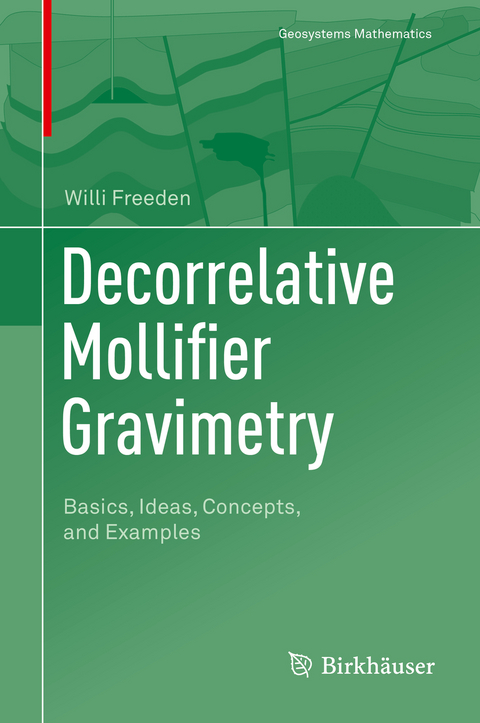
Decorrelative Mollifier Gravimetry
Springer International Publishing (Verlag)
978-3-030-69908-6 (ISBN)
This book is dedicated to surface as well as volume geology with potential data primarily of terrestrial origin. For deep geology, the geomathematical decorrelation methods are to be designed in such a way that depth information (e.g., in boreholes) may be canonically entered.
Bridging several different geo-disciplines, this book leads in a cycle from the potential measurements made by geoengineers, to the cleansing of data by geophysicists and geoengineers, to the subsequent theory and model formation, computer-based implementation, and numerical calculation and simulations made by geomathematicians, to interpretation by geologists, and, if necessary, back. It therefore spans the spectrum from geoengineering, especially geodesy, via geophysics to geomathematics and geology, and back.
Using the German Saarland area for methodological tests, important new fields of application are opened, particularly for regions with mining-related cavities or dense development in today's geo-exploration.
Introductory Remarks.- Part I: Gravitation and Gravimetry.- Gravitation.- Gravimetry.- Part II: Potential Theory.- Classical Context.- Newton-Haar Mollifier Theory and Application.- Disturbing Potential.- Part III: Surface Decorrelation.- Space versus Frequency Surface Modeling.- Surface Applications.- Part IV: Inverse Potential Theory.- Gravimetry as an Ill-Posed Inverse Problem.- Part V: Volume Decorrelation.- Volume Methodology.- Volume Applications.- Part VI: Decorrelative Potential Methods.- Decorrelative Monopole Potential Based Gravimetry.- Decorrelative Dipole Potential Based Magnetometry.- Decorrelative Acoustic Potential Based Exploration.- Decorrelative Elastic Potential Based Exploration.- Concluding Remarks.
"Graduate students in Geodesy interested in gravimetry, colleagues and researchers working in this field should read this book but also other geodesists, who are interested in modelling geodetic problems ... . This book, which allows readers to detect local structures provides them with all the necessary mathematical theories and concepts. ... the book can be recommended for all colleagues in Geophysics, Geology, and Geodesy, who deal with the various questions of inverse gravimetry" (Bertold Witte, Journal of Geodesy, Vol. 95 (8), 2021)
“Graduate students in Geodesy interested in gravimetry, colleagues and researchers working in this field should read this book but also other geodesists, who are interested in modelling geodetic problems … . This book, which allows readers to detect local structures provides them with all the necessary mathematical theories and concepts. … the book can be recommended for all colleagues in Geophysics, Geology, and Geodesy, who deal with the various questions of inverse gravimetry” (Bertold Witte, Journal of Geodesy, Vol. 95 (8), 2021)
| Erscheinungsdatum | 14.05.2021 |
|---|---|
| Reihe/Serie | Geosystems Mathematics |
| Zusatzinfo | XIX, 482 p. 196 illus., 168 illus. in color. |
| Verlagsort | Cham |
| Sprache | englisch |
| Maße | 155 x 235 mm |
| Gewicht | 913 g |
| Themenwelt | Mathematik / Informatik ► Mathematik ► Analysis |
| Mathematik / Informatik ► Mathematik ► Wahrscheinlichkeit / Kombinatorik | |
| Naturwissenschaften ► Geowissenschaften ► Geologie | |
| Naturwissenschaften ► Physik / Astronomie | |
| Schlagworte | Decorrelative Gravimetry • Geological Exploration • Mollifier Potential Methods • Potential Splines • Potential Wavelets |
| ISBN-10 | 3-030-69908-0 / 3030699080 |
| ISBN-13 | 978-3-030-69908-6 / 9783030699086 |
| Zustand | Neuware |
| Haben Sie eine Frage zum Produkt? |
aus dem Bereich


